Hue is a popular spot on the backpacking route through Vietnam but what is it like for working remotely? Following on from my visits to Da Nang and Hoi An, I visited Hue, primarily for sightseeing but I spent a couple of days working while here. Given the lack of information available online, I decided to put this post together detailing what Hue is like for working remotely. To give you some ideas about what to do while in Hue, I’ve detailed some of the main attractions as well.
Hue in Brief
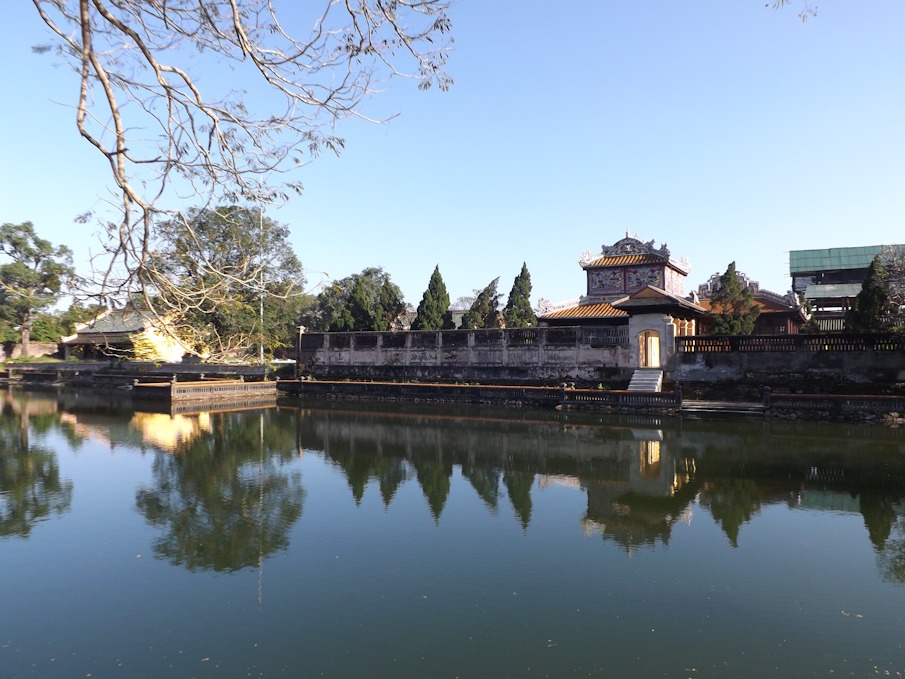
Located in central Vietnam, Hue was the capital of the country until 1945 and has many historic features to attract visitors. Hue was close to the border which existed between the North and South during the Vietnam War and the city suffered significant damage as a consequence. The nearby cities of Da Nang and Hoi An are both popular digital nomad destinations but Hue doesn’t seem to get mentioned in this context at all, despite being on many backpackers itineraries.
Coworking Spaces in Hue
To my knowledge, there are two coworking spaces in Hue and I used one of these during my stay in the city. Google shows a further three but I don’t believe the information is correct (as detailed further down).
1. CoPLUS Working Space
Opening hours: 7:30am to 6:30pm Monday to Saturday. Closed Sundays.
This is the coworking space I used while in Hue. I wouldn’t say it was amazing but it seemed to be the best available, the location was convenient and it was adequate for my needs. This is a fairly small space with a mixture of tables and bar style seats to work from. There is also a small outdoor area for phone calls or meetings – there are tables and power sockets here too. Everyone else using CoPLUS was Vietnamese, the guy working there seemed a bit surprised when I showed up but he spoke English and everyone was welcoming.
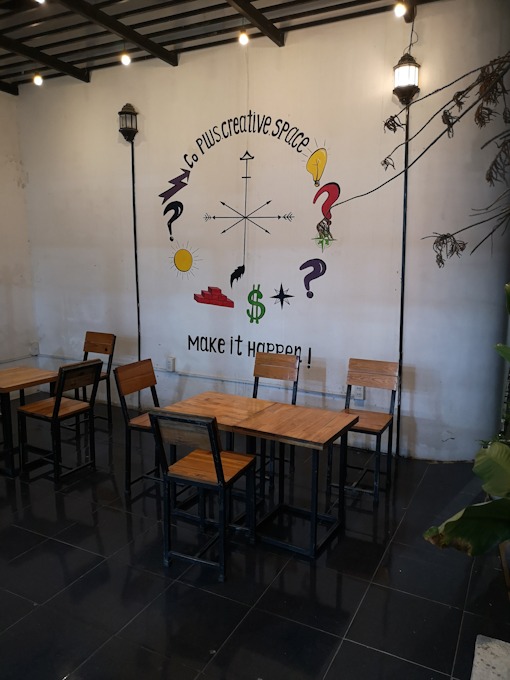
There were three Wi-Fi networks available to connect to although two of these wouldn’t work when I tried to connect. The other network was fine for the most part but there was a period in the afternoon when it kept freezing. When I first ran a speed test on the Wi-Fi network, it gave a download speed of 59.6 Mbps, upload speed of 37.6Mbps and jitter of 2ms. When I ran a speed test while having issues with it freezing, download speed was 28.0 Mbps, upload was 29.9 Mbps and jitter was 108ms, hence the problems.
Also, if you want to use a scanner there may not be one available. I didn’t need one for work, but I did have a photo of myself to scan in for a visa application and the scanner was broken – I was told it broke the previous month.
The prices for using this space are as follows:
- Hot desk hourly rate – 15,000 VND
- Hot desk day pass – 66,000 VND
- Monthly rate for a desk – 1,200,000 VND
- Monthly rate for an office – 4,000,000 VND to 7,000,000 VND depending on office size
In comparison, a day pass at Hub Hoi An, the sole coworking space in Hoi An, costs 210,000 VND – over three times the price. Meanwhile, in Da Nang I paid 75,000 VND in DNC Da Nang Coworking Space (the monthly space here is actually cheaper at 990,000 VND) and 90,000 VND in Enouvo Space 2. I think the coworking spaces in Hoi An and Da Nang are superior, but CoPLUS offers cheaper day passes.

2. Ani Working Space
I didn’t use try using this space and, on first impressions, the website, which is mostly in Vietnamese, suggests that this a language school. However, within one of the website dropdowns is the link you want, which is this.
The site is all in Vietnamese but there is a price list which translates to:
- Hourly rate for a hot desk – 7,200 VND (£0.25 GBP)
- Monthly rate for a fixed desk – 288,000 VND (£9.86 GBP). A discount is available for rentals over 3 months.
- Monthly rate for an office/teaching room – 632,000 VND (£21.63 GBP). Google translate tells me this is a reference price and you need to contact the company for detailed pricing, so I think there are different prices based on office size and number of people. A discount is available for rentals over 3 months. There appears to be an option for fixed day office rental as well, although no price is specified.
As you can see, the monthly rates are ridiculously cheap. I suspect they get zero or minimal foreigners coming in, but I’ll give the place a try if I’m ever back in Hue!

Other Coworking Spaces according to Google
You will come across the three places below if you do a search for coworking spaces in Hue. To save you some time, this is what I have been able to find out:
Box Coworking Space – I attempted to visit but, upon arrival, discovered that the place had closed down. There was still a sign hanging up for Box, but a guy in a local café there confirmed to me that it was permanently closed.
Beehexa Hue Office – As far as I can tell, this has been incorrectly listed as a coworking space. It is located in the same building as CoPLUS Working Space which may have caused the error – I assume they rent an office within CoPLUS.
HueIC Innovation Hub – Possibly an option but there is a complete lack of information available online. Innovation Hub is based at Hue Industrial College and is focused on start-ups. There’s isn’t anything on the website to suggest there is a coworking space available. However, according to the one mildly informative review on Google, freelancers can use their creative work space.
6 Things to do in and around Hue
1. Visit The Imperial City
Also referred to as The Citadel, this is the main attraction in Hue and a must visit while here. It was once the centre of government but lost its purpose long ago and later suffered as a battleground during the Vietnam War. Nowadays it’s a popular tourist site – the place is huge so allow at least half a day to walk around, explore the buildings and read about the city’s history.
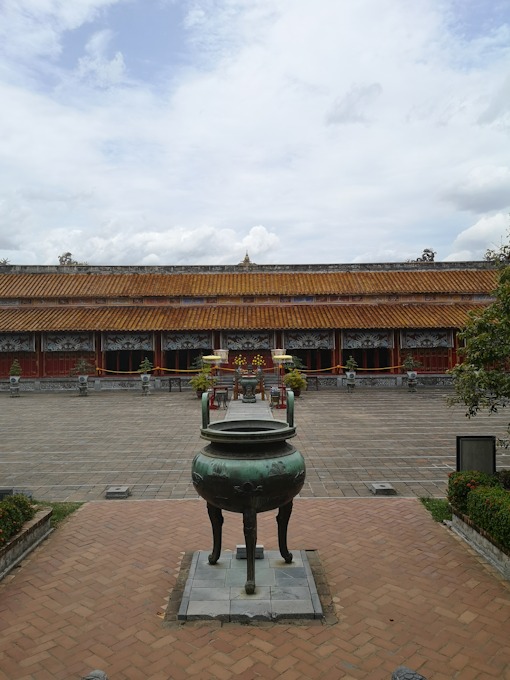
Note that there is a dress code at the Imperial City. It isn’t that strict and you are allowed into the complex regardless, you just might be stopped from entering certain buildings. The last time I was here I went with two guys and one girl from the hostel I was staying at – the guys were fine in knee length shorts and t-shirts, the girl was asked not to go inside some of the buildings on account of her sleeveless top and short shorts. Also, make sure to bring sun protection – you’ll be spending a lot of time outside with no shade.

There is an entrance fee of 200,000 VND per person (well, per tourist anyway). A selection of two day combination tickets, covering some of the other historic sites around the city, are available between 420,000-580,000 VND.
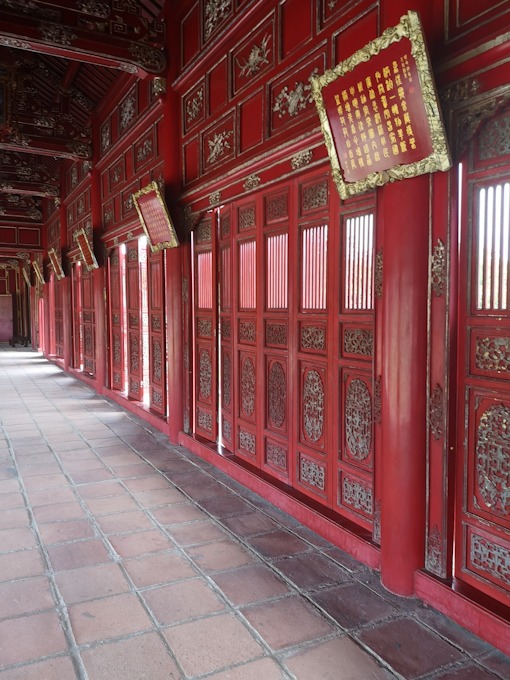
2. See Tombs, Temples, Pagodas, Palaces and more Tombs
As a former capital of Vietnam, there are a host of historical buildings and royal tombs in the city and nearby, including:
- Tomb of Khai Dinh – 150,000 VND entrance fee
- Tomb of Minh Mang – 150,000 VND entrance fee
- Tomb of Tu Duc – 150,000 VND entrance fee
- Hon Chen Temple – 50,000 VND entrance fee
- The Huyen Tran Princess Temple – 30,000 VND entrance fee
- Thien Mu Pagoda – free entry
- Tu Hieu Pagoda – free entry
- An Dinh Palace – 50,000 VND entrance fee
- Tomb of Gia Long – 50,000 VND entrance fee
- Tomb of Thieu Tri – 50,000 VND entrance fee
- Tomb of Dong Khanh – 50,000 VND entrance fee
I’ve only visited a few of these and, unless you’re really enthusiastic about Vietnamese history or have lots of spare time, I don’t think it’s worth the effort to see them all considering they are quite spread out. To get to some of these, you’ll need to either rent a scooter, book a tour or arrange for a taxi driver to take you to them.
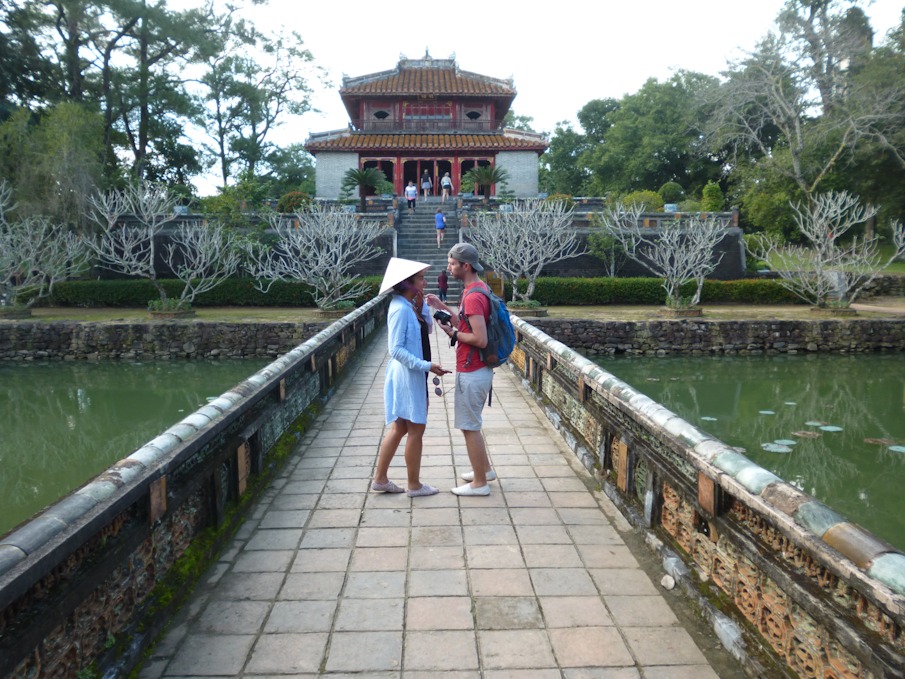
I thought the Minh Mang Tomb, situated by a lake, was really nice and peaceful. This is 12km south west from the city centre so you’ll need transport. A half day trip beginning with a visit here then starting to head back, first via the Tomb of Khai Dinh (3km drive from Minh Mang) and followed by a visit to the Tomb of Tu Doc (7km drive from Khai Dinh) works well. After Tu Doc, it is a 7km drive back to the city centre. If you need a break from important historical sites, there is also an infamous water park (closest to Khai Dinh Tomb) in the same area, which bring us onto…
3. Explore Ho Thuy Tien, aka the Abandoned Water Park
This made for an fun bit of urban exploration. I have written a separate post with details about the park and how to get there.
4. Go on a DMZ Tour

As mentioned earlier, Hue was near the border between north and south during the Vietnam War. Hue itself was a battleground at one stage during the war, including inside The Citadel. Because of its location, Hue is one of the best places for a DMZ tour in Vietnam.

I went on one of these tours during my first visit to Hue, arranged through our accommodation, and it made for an interesting (and long) day trip. The highlight was walking through the cramped Vinh Moc Tunnels and learning about the living conditions in them. To give some brief details, this network of tunnels was created during the Vietnam War and was effectively an underground village for residents in the area, who had been forced from their homes due to US bombing. The tunnels were designed to keep the villagers alive and provide basic living conditions – children attended school, women gave birth to babies, there was even an area were movies were screened with a generator. Despite all the bombing going on above, the Vinh Moc Tunnels fulfilled their purpose and nobody died inside them.
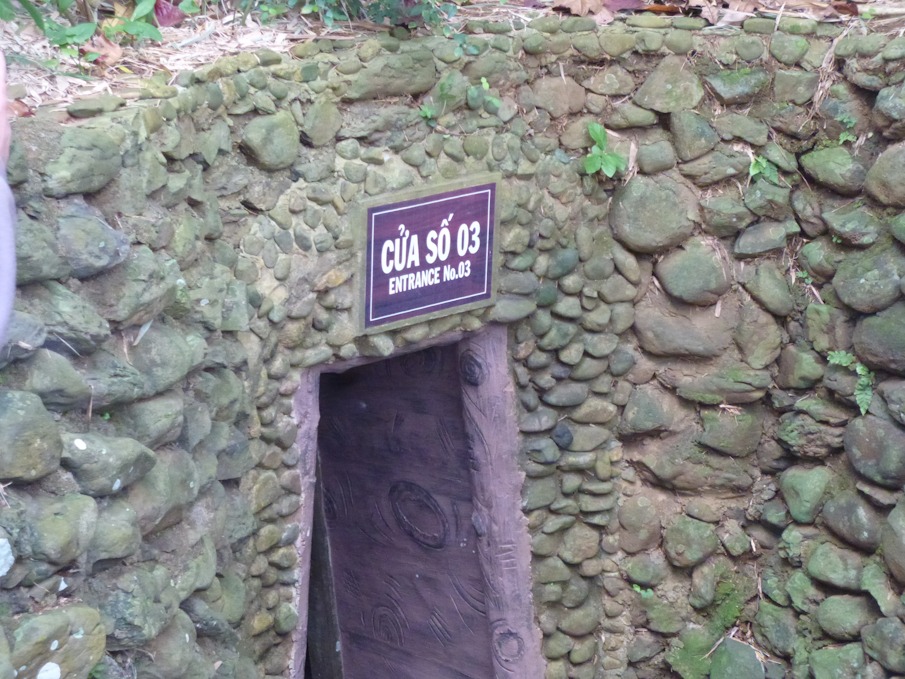
The tunnels aren’t the most comfortable (there were only a few spots where I could stand up straight) but I can’t complain – this was a short visit to the tunnels for tourism, people were forced to live in them to survive during the Vietnam War. If you’re claustrophobic, a visit here probably isn’t the best idea. There was a lady on our group tour who decided, almost immediately after entering the tunnels, to turn around and wait outside for everyone to come back.

5. Drive or take a tour along the Hai Van Pass
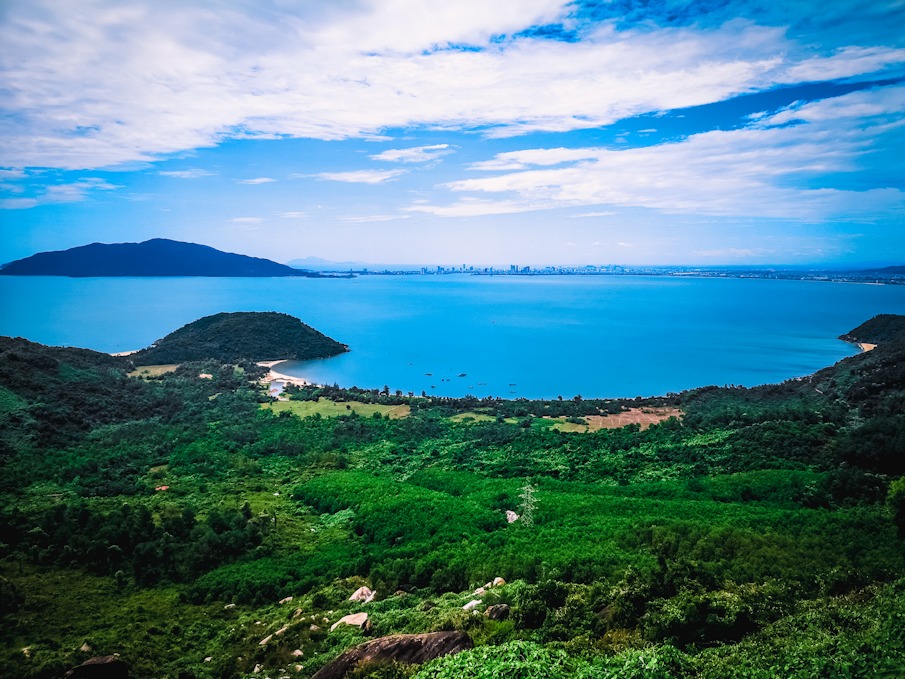
Made famous by an episode of Top Gear, the Hai Van Pass links the cities of Hue and Da Nang and offers stunning views along the way. There’s isn’t much traffic along here as a tunnel under the mountains, completed in 2005, is a faster route. There are a few main spots where people stop to take in the views although, providing it is safe to do so, you can stop anywhere.
At the very top of Hai Van Pass are remnants an old French bunker. All of the tour buses stop here so this is the busiest spot. I think the nicest views are slightly after this (if driving from Hue) in an area referred to as the rocks. There are food and drink stalls by the rocks (and usually a few tourists) so you can’t really miss it.
How to get here: motorbike/scooter (self-driven or on a tour) is the best option. You can arrange a tour by car or jeep, though I think it’s more fun by motorbike.
6. Take a day trip to Phong Nha
Phong Nha is a small town that has been growing in prominence due to the discovery of several caves, including Sun Doong in 2009, the largest cave in the world. Unless you are prepared to pay $3,000 US for a four day tour, you cannot actually visit Son Doong, but there are a number of smaller caves and other attractions and you can visit some of these in an affordable day tour from Hue.

Important: This is a long day trip as the drive between Hue and Phong Nha takes four hours each way. A typical group tour will start with hotel/hostel pickup at 6:30am and get you back to Hue around 7pm. With some time needed for lunch, this leaves around four hours for sightseeing, which is likely to include one cave plus a few other attractions (these vary per tour) in the area. I decided to spend one night in Phong Nha instead (leaving Hue in the afternoon by sleeper bus, doing a tour the next day through my hostel in Phong Nha, then taking an overnight sleeper bus to Ninh Binh after the tour). I think this is a better way to visit, but a day tour from Hue is an option if you’re short on time.

Getting to/from Hue
Sleeper Bus – Probably the most popular method for backpackers to get around Vietnam, you can catch a sleeper bus from many locations to Hue. The sleeper buses aren’t just for long distance trips – you can catch them for relatively short journeys like from Hoi An to Hue, which I did during my last trip to Vietnam and it took around 4 hours.
Train – Again, you can catch a train from many locations around Vietnam to Hue. On my first trip to Vietnam, I took an overnight train from Ninh Binh to Hue.
Plane – Not a great option. Hue has an international airport, which is approximately 30 minutes by taxi or shuttle bus to the city, but the routes currently available are all domestic. Da Nang International Airport has more flights (domestic and international) and there is a shuttle bus from here to Hue which takes around 2 and a half hours.
The Hai Van Pass – As mentioned earlier, travelling by motorbike between Hue and Da Nang along the Hai Van Pass is a popular activity. Some companies offer motorbike rental from one city and drop off in another. If you want to do this but you’re not an experienced motorbike driver, you can book a private tour and sit on the back of the bike while a local drives.
Accommodation

The last time I was in Hue, I stayed in a dorm at a simple hostel called Hue Happy Homestay. The facilities were basic but fine and for $4 US a per night, including breakfast and one free beer each evening, this was excellent value for money. The owner’s family were extremely warm and friendly and can arrange tours and onward transportation.
Is Hue a good location for digital nomads?
To conclude, I don’t think Hue is a great option. Once you’ve seen the sights, the city doesn’t have a huge amount to offer and there isn’t a community of digital nomads there like you’ll find in nearby Da Nang and Hoi An, or in Hanoi in the north or Ho Chi Minh City in the south. Also, in terms of places to work remotely from, there aren’t many options. However, Hue is definitely worth visiting if you’re in Vietnam and you shouldn’t have a problem working remotely while there.
Hi James, do you have an idea of the quality of the wifi in hotels in Hue, I need to work the two night I plan to be there. What about the mobile reception (as back up for wifi failures). Thanks. Very useful blog.